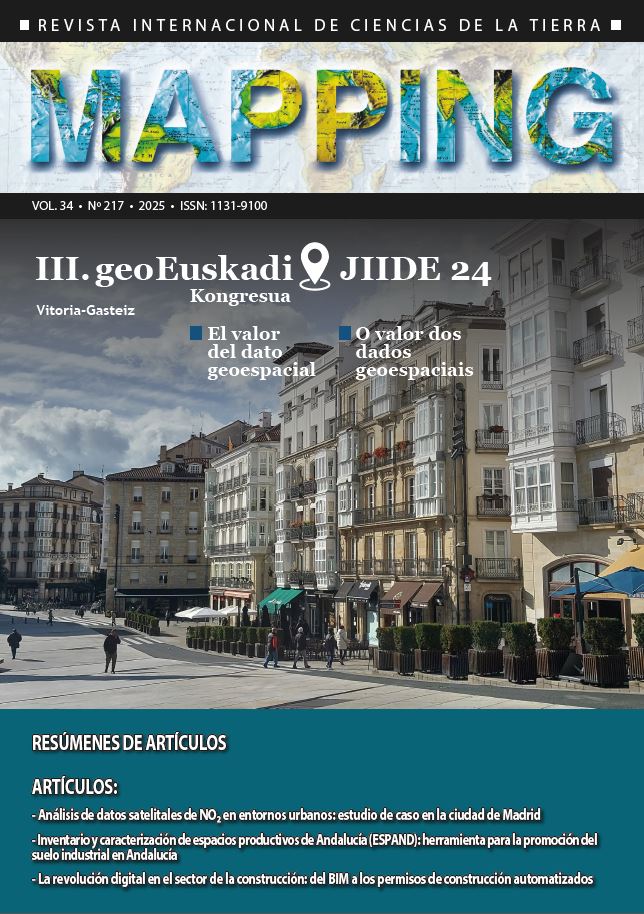The digital revolution in the construction industry: from BIM to automated building permits
DOI:
https://doi.org/10.59192/mapping.466Abstract
The construction sector has traditionally been a field where administrative and technical processes were performed manually, resulting in delays, errors and lack of transparency. However, the adoption of digital technologies is changing this paradigm. The European Digital Strategy has driven innovation in various sectors, including construction, where tools such as Building Information Modeling (BIM) and Geographic Information Systems (GIS) are playing a transformative role. In this framework, Digital Building Permits (DBP) and Digital Building Registers (DBL) are positioned as key tools to modernize the sector. These technologies, besides digitilizing administrative processes, also generate reusable data that is critical for urban planning and the development of sustainable cities. These tools, together with advanced technologies such as BIM, GIS and digital twins, not only optimize administrative processes, but also generate valuable open data for urban analysis and sustainability. The European projects ACCORD and CHEK are leading this transformation, integrating automation, interoperability and spatial analysis tools that are redefining the relationship between the construction sector and the field of Geographic Information Systems (GIS). As advanced tools such as digital twins and ontology-based automation are integrated, the relationship between the construction industry and GIS is rapidly evolving. This article explores how these innovations impact the GIS industry and transform its role in spatial planning and analysis.
Downloads
Downloads
Published
How to Cite
Issue
Section
License

This work is licensed under a Creative Commons Attribution-NonCommercial-NoDerivatives 4.0 International License.





